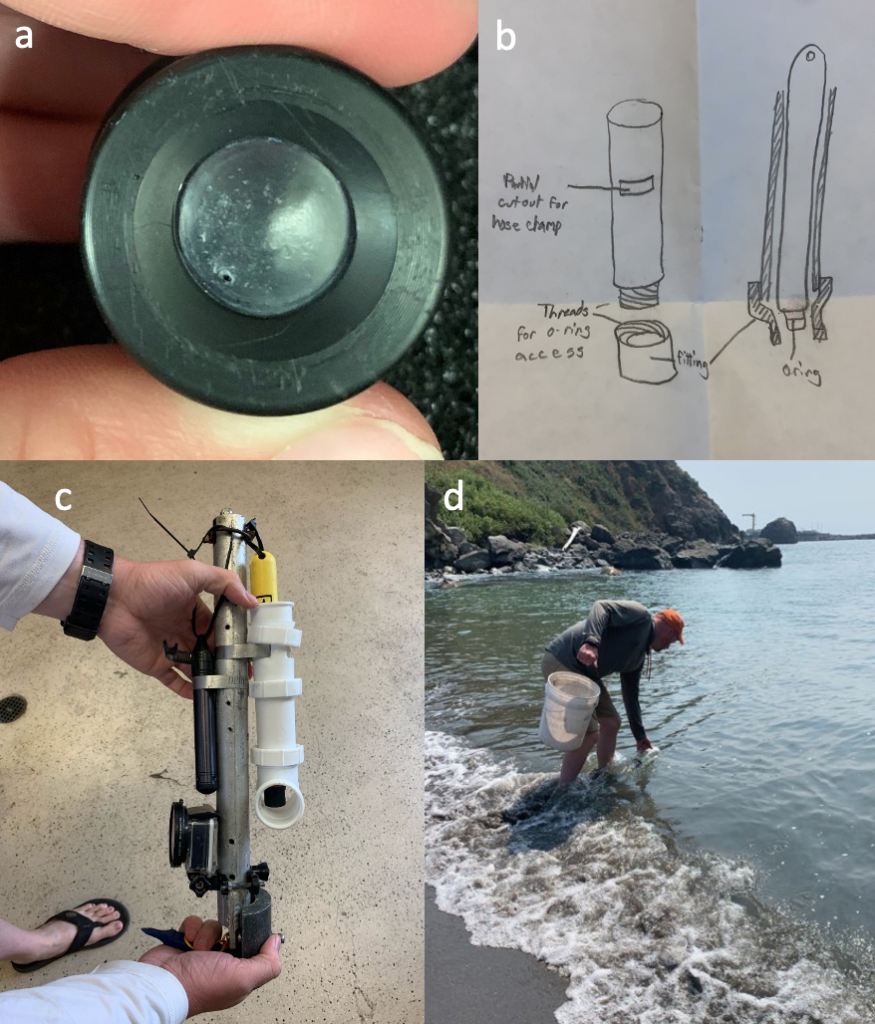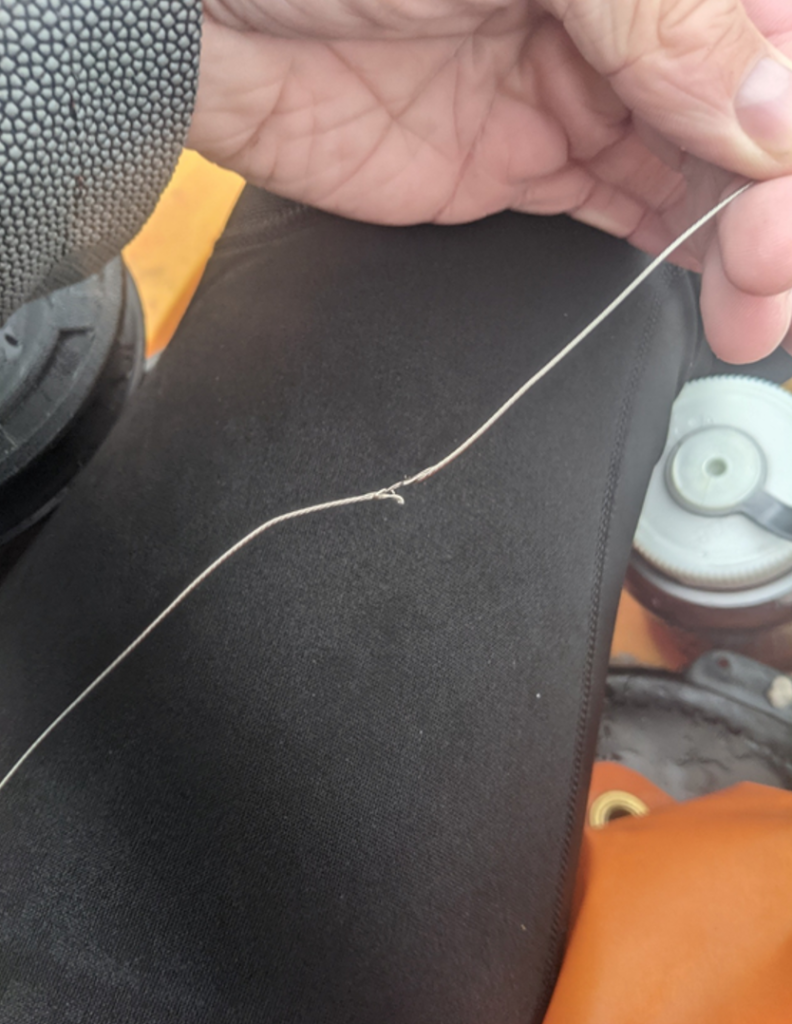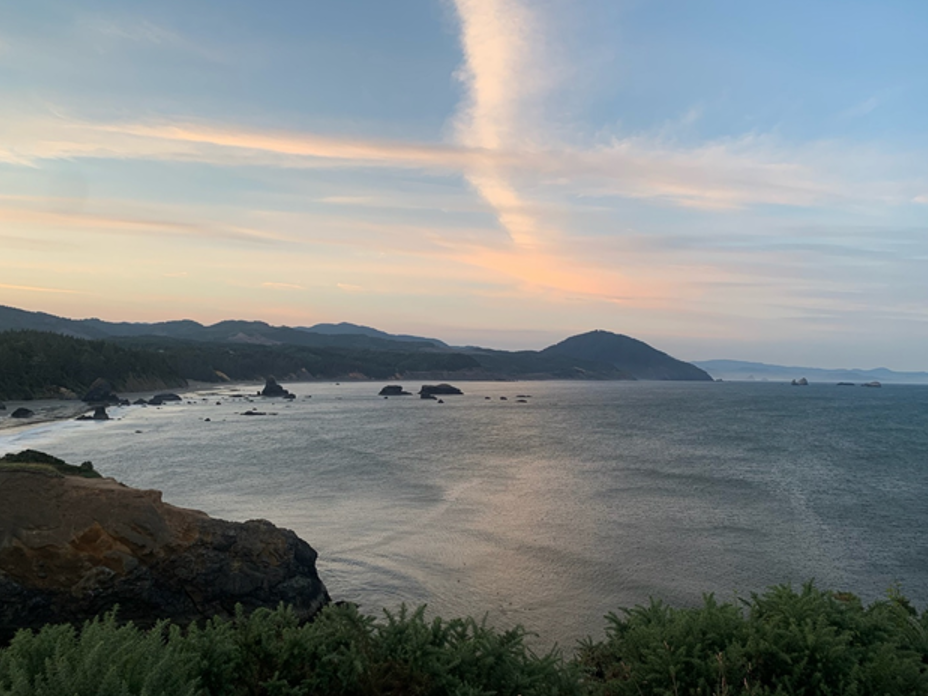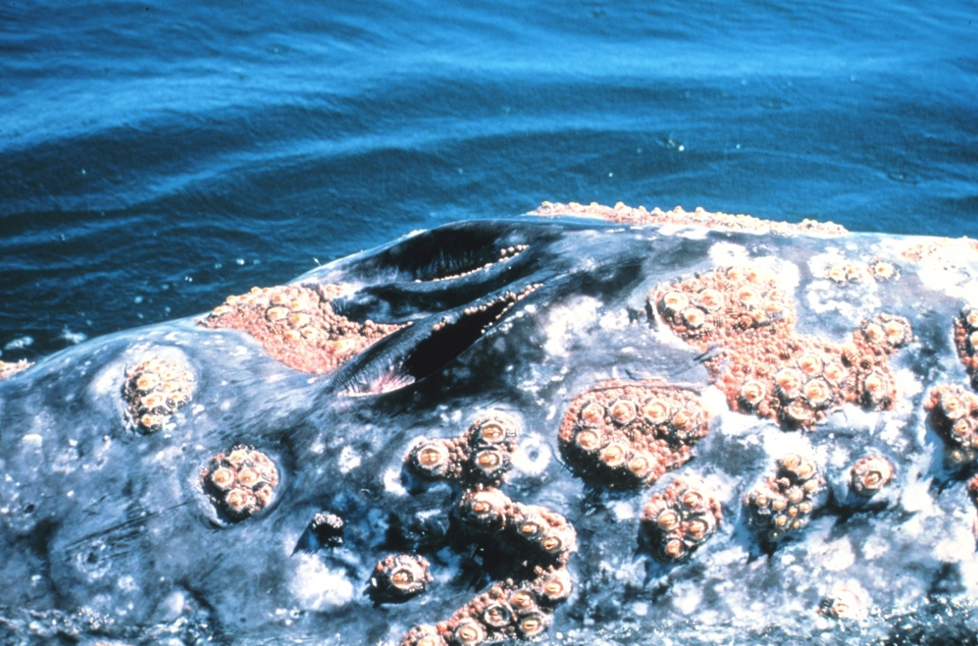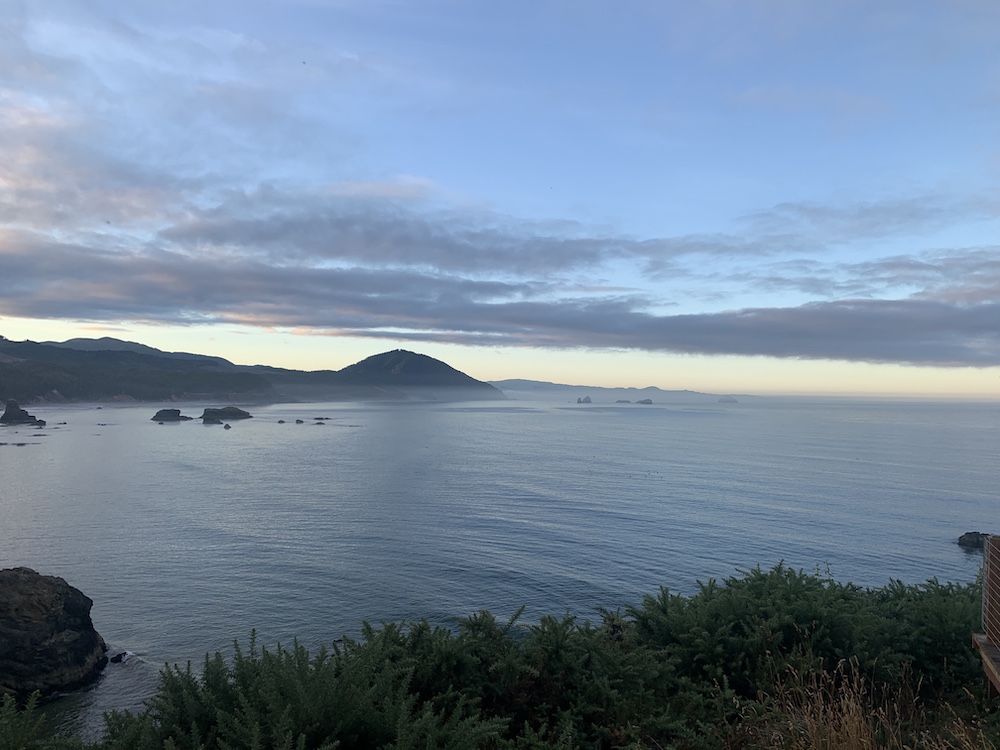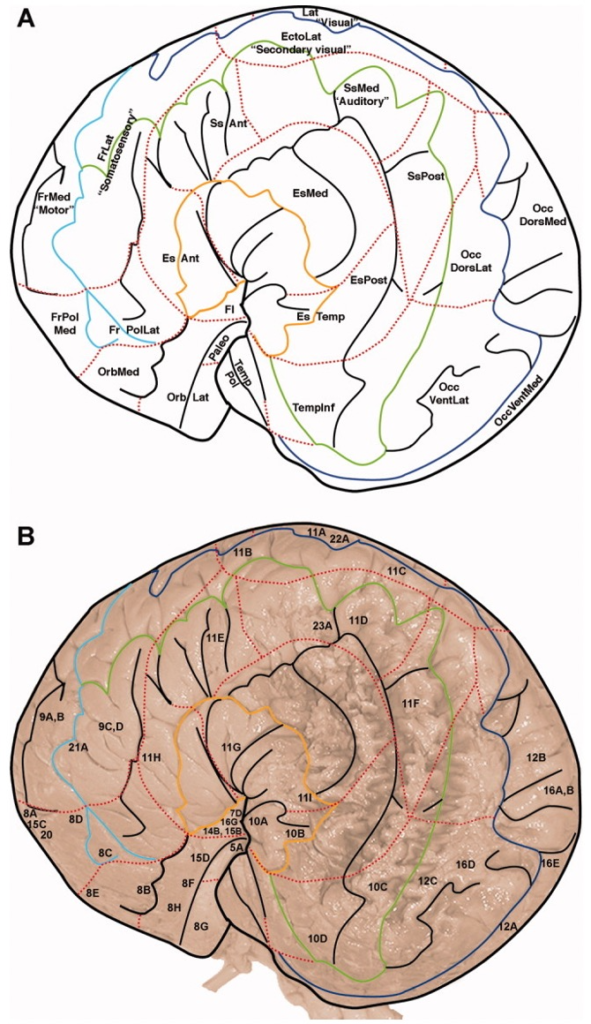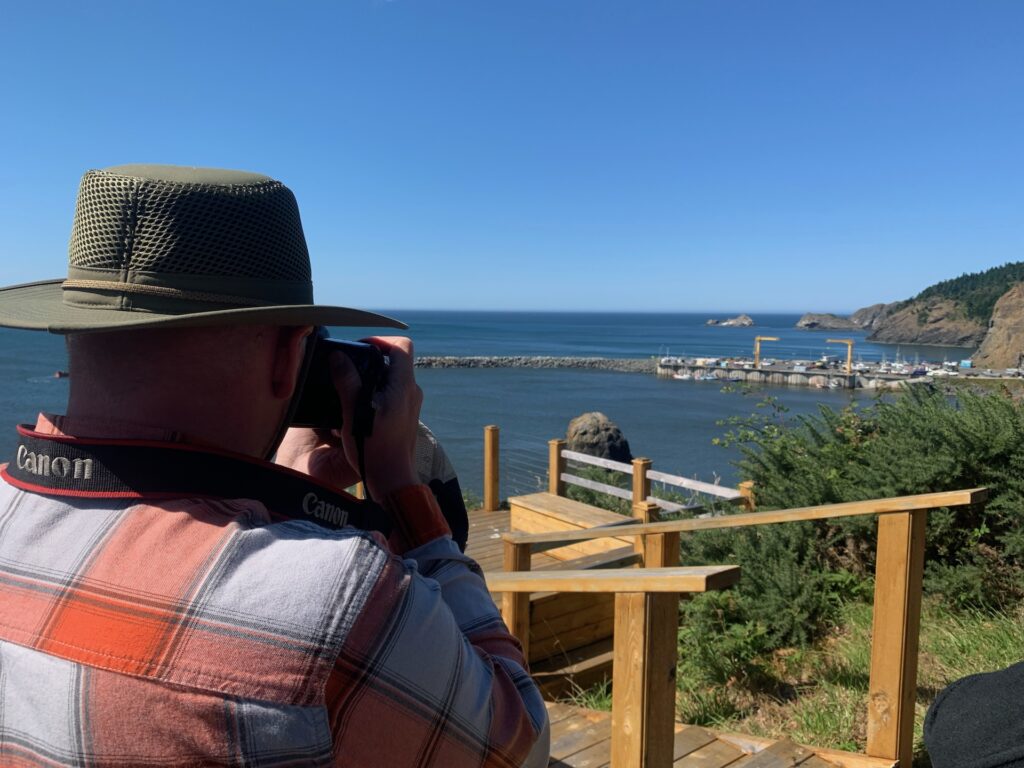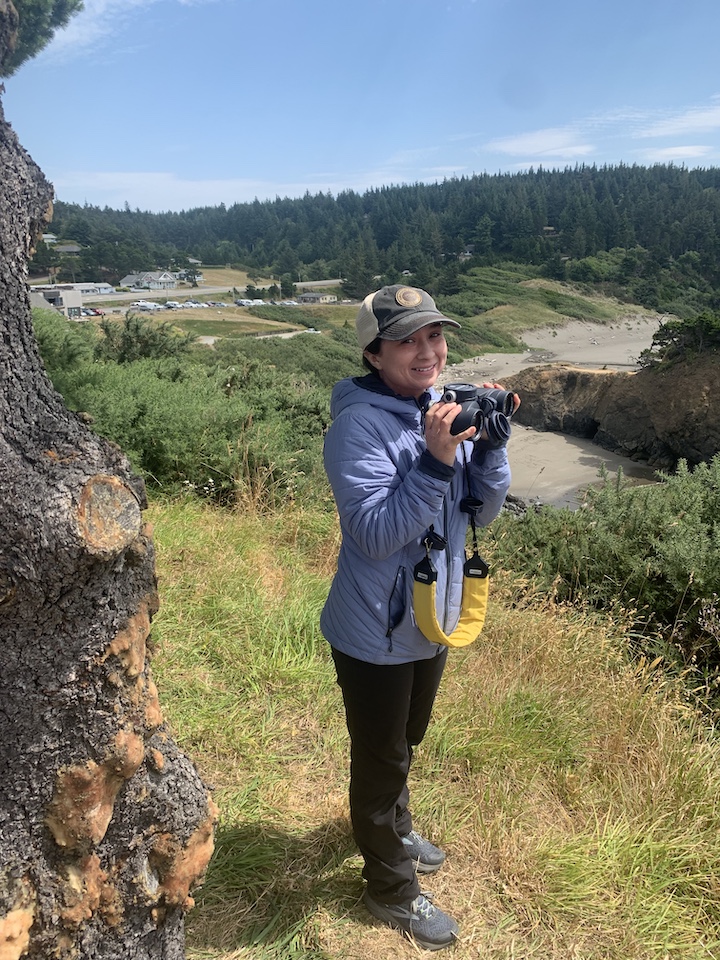By Lisa Hildebrand, PhD student, OSU Department of Fisheries, Wildlife, & Conservation Sciences, Geospatial Ecology of Marine Megafauna Lab
The 2021 TOPAZ (Theodolite Overlooking Predators And Zooplankton) field season in Port Orford has come to a close. Its close also signals the end of my tenure as field project lead, after I took over from my predecessor Florence Sullivan (OSU/GEMM Lab MSc grad) in the summer of 2018. Allison Dawn, incoming GEMM Lab Master’s student, is my successor and I am excited to pass the torch to her and see what new directions she will take the project. In today’s post, I will not recap the field season as I often do at the end of August. However, I strongly encourage you to read the blog posts written by the JASPER (Journey for Aspiring Scientists Pursuing Ecological Research) interns that made up Team “Heck Yeah”, Nadia Leal, Damian Amerman-Smith, and Jasen White, as they did an excellent job summarizing what we saw and experienced over the last six weeks. Instead, I want to take this opportunity to highlight a few people in Port Orford (and their most memorable gray whale encounters) who created a home away from home for me in Port Orford and played a large part in creating rich and meaningful experiences during my time as field project lead.

Up first is Tom Calvanese, the OSU Port Orford Field Station manager. The field station can be an extremely busy place, especially during the summer when ideal weather conditions allow many marine scientists to conduct their research. There can be a lot of comings and goings at the field station, with swift turnarounds between groups and individuals from different departments and projects; some staying just one night, while others (such as the TOPAZ field teams) stay for several weeks. Leigh and I like to call Tom “the man behind the machine” because he manages to keep this busy field station running smoothly. From the get go, Tom has been a solid rock for me in Port Orford and he has never hesitated to give me the time and attention I needed, be it because I was seeking him out for advice about how to handle a personnel issue, a lesson in how to tie strong knots, or just a friendly conversation at the end of a long field day. I know that I have found a life-long friend and colleague in Tom through this project and for this I am very grateful.
One of Tom’s most iconic gray whale encounters happened when he was kayak fishing with a few friends in Tichenor Cove (coincidentally one of the two TOPAZ study sites). The individual kayakers were scattered throughout the cove, all in search of a good spot to hook some rockfish or lingcod. The group had not been out on the water for very long, which likely plays a large part in the shock and surprise that comes next, when Tom suddenly heard the blow of whale. He looked up from his fishing in the direction of the blow, only to see that a gray whale was surfacing right underneath one of his kayak fishing friends. Said friend could do nothing as he sat paralyzed in his kayak which slowly slid off the back of the gray whale as it dove once again. Neither whale nor human was harmed in this encounter, as the whale went back to foraging in the area, and the human (after several minutes of incredulity) went back to fishing. Every year, Tom has warned me of this location where this interaction happened (an uncharacteristically deep spot in Tichenor Cove compared to the rest of the area), though his warning is always accompanied with a twinkle in his eye.
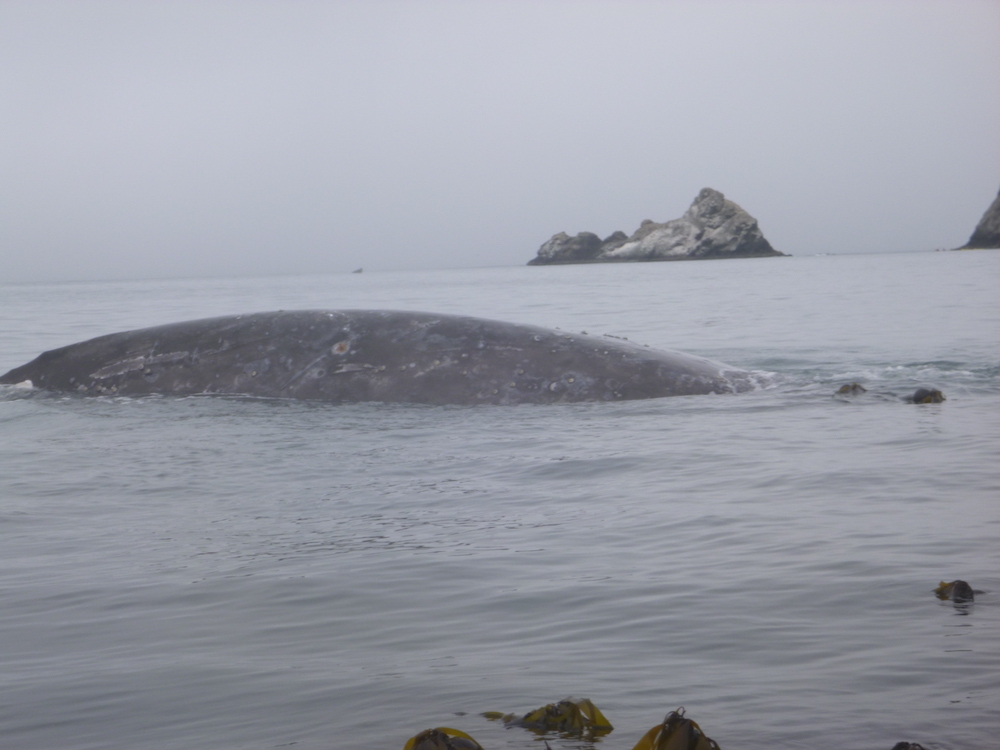
Dave Lacey owns South Coast Tours (SCT), a tour operating business that offers boat, kayak, and snorkeling tours, as well as surf lessons. Dave has been one of the most generous individuals to the TOPAZ/JASPER projects, never hesitating to loan us wetsuits and/or kayaks and allowing us to use his office and storage areas every day. He has also delivered excellent kayak paddle & safety instruction to the field teams over the last two years. Dave has truly become a vital partner during the Port Orford field seasons. It has been such a pleasure to be able to learn from and work with him, as well as see his business grow each year. Even though I will not be leading the project in Port Orford anymore, I am excited to continue my working relationship with Dave through obtaining important photo identification and sighting data of gray whales in the area when the GEMM Lab team is not there.
Although SCT is not even 10 years old (though it will be next year in 2022!), Dave has had so many gray whale encounters that he said it was really hard for him to pick just one. However, he ultimately picked the first time that he smelled a gray whale’s breath. It happened during a kayak tour when the group rounded the corner from Tichenor to Nellie’s Cove and a whale suddenly surfaced right in front of everyone, hitting them with the misty cloud of its blow. Up until this moment, Dave had both seen and heard hundreds of whale blows, but had never smelled one. He says, “to hear and see [the blow] is pretty normal but to get the third sense [of smell] is really phenomenal.”. Upon asking what he thinks of the smell, Dave replied that he does not think it is as gross as some people may think and during tours on his boat, the Black Pearl, he now actually tries to (safely) maneuver the boat downwind of the blow so that his clients can get a whiff as well.

Mike Baran is a co-owner of Port Orford Sustainable Seafood (POSS) and he also occasionally guides kayak and snorkel tours for SCT. POSS is a community supported fishery that delivers wild, line-caught seafood direct from Port Orford to communities throughout western Oregon. I developed a great friendship with Mike through seeing him on the water a lot as a kayak guide for SCT in my first summer leading the TOPAZ/JASPER projects (2018), as well as seeing him at the field station on most days since POSS’ office and fish-processing facility are located there as well. If you are a keen follower of the GEMM Lab blog, you will know by now that the field season in Port Orford is short, yet very intense and taxing. Therefore, uplifting and sometimes goofy interactions with someone can really turn an upsetting day (potentially due to kayak gear loss or simply exhaustion) into a better one. Mike provided me with a lot of uplifting and goofy interactions and always helped put a smile on my face.
As a SCT kayak guide, Mike has also had many gray whale encounters, however none are as memorable as the one he had on August 2nd, 2019. Mike describes it as a typical Port Orford day: “windy with lots of whale activity all morning”, though all of the activity had been at a distance (the whale blows were far away). Yet, on the paddle back through Tichenor Cove along the backside of the port jetty, Mike and his tour glimpsed a whale that was headstanding along the jetty rocks. The paddlers slowed down and kept their distance, watching as the gray whale foraged, diving down for 3-4 minutes at a time before resurfacing in almost the same location as it had surfaced in before. Suddenly, the whale surfaced right in the middle of the kayak group, with Mike to its left, a mere meter or so away, and the rest of the group to its right. Despite the fact that the sudden appearance of the whale scared the living daylights out of Mike, he was able to take a picture of the surfacing, which features one of the tour clients in the background with her hands lifted up to her face in total shock. So, thankfully for us the moment is not just eternalized in Mike’s memory but also in photographic form.
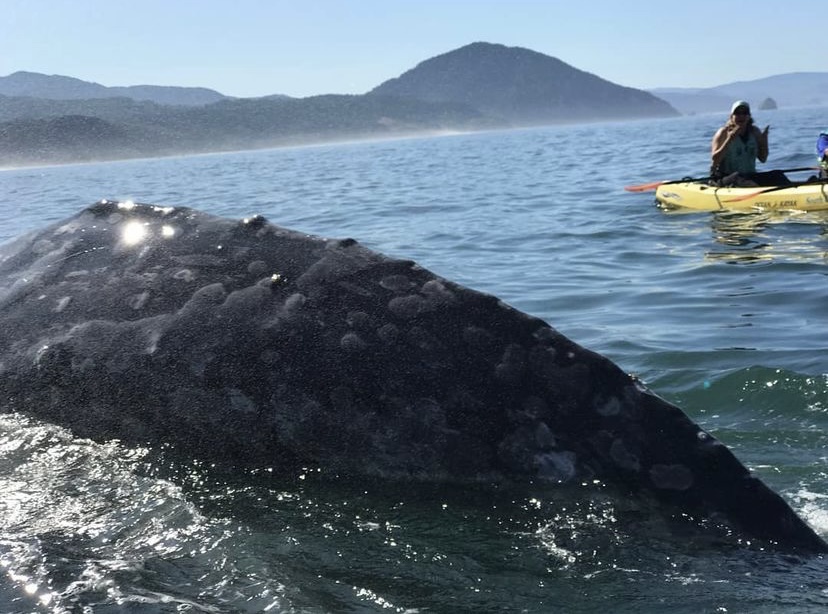
Last but certainly not least is Tara Ramsey, the coordinator of the Redfish Rocks Community Team since the summer of 2020. Despite arriving to Port Orford and her job in the middle of a pandemic, Tara has developed a lot of exciting new outreach and education material for the Redfish Rocks Marine Reserve, including an excellent walking tour of Port Orford (if you are ever there, I cannot recommend it highly enough – it starts at the Visitor Center!). While I have not known Tara as long as the other individuals featured in this blog, she has become a really great friend of mine, teaching me a lot about the reserve and Port Orford in general, including the best spot on Battle Rock beach for a small nighttime bonfire.
Tara’s most memorable encounter with a gray whale is in fact her only encounter with a gray whale to date, and it happened just a few weeks ago when she was doing an Instagram livestream of the Redfish Rocks Marine Reserve aboard SCT’s Black Pearl. The purpose of the livestream was to bring the public into the reserve without having to leave the comfort and current safety of their homes. Tara describes the conditions in the reserve as “quite eerie” that day as there was a combination of smoke, fog, and no wind in the air. These conditions resulted in some pretty poor visibility, but gave the reserve an almost mystical appearance. Tara was actually mid-sentence on the livestream, talking about how special this moment was for her because it was her first time being in the reserve, when a whale surfaced a few meters from the boat. While the encounter was brief (the whale only surfaced 3 or 4 times before disappearing into the fog), Tara says the vision will be etched in her memory forever as Redfish Rocks is “a circle of islands, kind of like an amphitheater and it was amazing to see the whale just in the middle of it all.”

I will miss being the field project lead of the TOPAZ and JASPER projects. I will miss kayaking every other day and spying on gray whales from the cliff site. I will miss having the opportunity to work closely with and train a new crop of aspiring marine scientists. I will miss my daily interactions with Tom, Dave, Mike, Tara, and many more individuals, when I do not go to Port Orford for six weeks next summer. I will cherish all the memories I have amassed over my last four summers in Port Orford for a very long time. Most of all, I will always be grateful to the gray whales that brought me back every summer and who (in a way) made all those memories happen.




